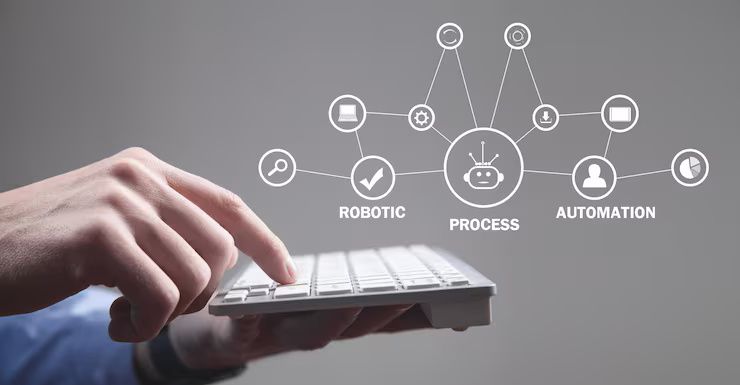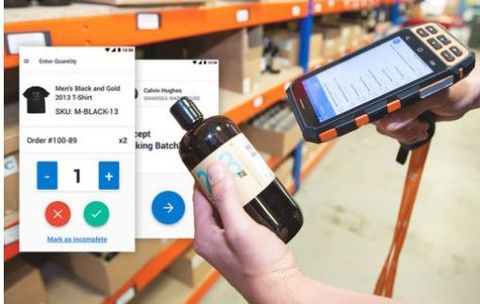Workflow Automation Platform Guide: Learn, Discover & Understand How It Works
Workflow automation platforms are digital systems designed to streamline repetitive tasks, daily operational processes, and information movement within an organization. These platforms exist because manual workflows can be slow, inconsistent, and prone to human error. Automation solutions use predefined rules, triggers, and logic to execute tasks such as data entry, scheduling, approvals, file transfers, and communication routing.
Automation has become a part of modern workplaces to improve productivity and support digital transformation. Instead of relying on manual reminders, paperwork, or switching between multiple applications, workflow automation creates a structured and repeatable process. This system helps employees focus more on decision-making, creativity, and strategy rather than routine tasks.

Importance
Workflow automation platforms are relevant in today’s technology-driven work environment. They help organizations operate more efficiently and reduce operational delays. The importance of workflow automation can be seen in several key areas:
-
Productivity enhancement: Tasks are completed faster without manual intervention.
-
Consistency and accuracy: Automation reduces the likelihood of errors and missing information.
-
Better collaboration: Different departments can share data and workflows seamlessly.
-
Scalability: Systems can handle increased workload without additional staff or manual effort.
-
Data visibility: Automated workflows record actions and decisions, providing traceability.
Those who benefit include IT teams, project managers, finance departments, HR administrators, and business leadership. Automation solves problems related to task overload, slow approvals, missed deadlines, and fragmented documentation. It also plays a role in supporting digital business models where speed and accuracy are necessary for sustainable growth.
By replacing repetitive tasks with automated sequences, businesses can maintain consistency even during high-volume operations. This makes workflow automation a significant tool in modern work environments.
Recent Updates
In the past year (2024–2025), workflow automation has seen advancements linked to artificial intelligence, integration capabilities, and user-friendly design. Some notable developments include:
-
AI-powered automation (2024): Platforms now use machine learning models to learn patterns, predict workflow outcomes, and recommend process improvements.
-
Low-code and no-code workflow builders (2024–2025): These allow non-technical users to design and modify workflows without programming knowledge.
-
Industry-specific automation modules (2025): Tools are being tailored for fields such as healthcare, logistics, finance, and education.
-
Integration with cloud computing (2024): Cloud-based deployment has increased accessibility, real-time collaboration, and remote workflow execution.
-
Data privacy and compliance automation (2025): Automated tools now include built-in compliance tracking for tasks involving customer data.
These trends reflect a strong shift toward simplified user experience, intelligent automation, and wider adoption in both small and large organizations. Workflow automation continues to expand as part of broader digital transformation strategies worldwide.
Laws or Policies
Workflow automation is influenced by data-protection regulations, workplace compliance rules, and technology governance frameworks. While policies vary by country, several common regulations impact automation platforms:
-
Data privacy laws: Regulations such as GDPR (Europe) and CCPA (California) require secure data handling, which automation platforms must follow.
-
Cybersecurity requirements: Organizations must protect sensitive information processed by automated workflows, aligning with security standards like ISO/IEC 27001.
-
Record-keeping compliance: Industries such as finance, legal, and healthcare must maintain clear records, making automated logs essential.
-
Government digital transformation programs: Many countries encourage digital adoption, improving integration between public organizations and automated systems.
-
Access-control policies: Role-based permissions ensure users only access data appropriate to their responsibilities.
Policies encourage safer technology use, responsible automation, and transparency in digital operations. Understanding these rules is important for maintaining organizational trust and lawful workflow management.
Tools and Resources
Several tools and educational platforms support understanding and implementation of workflow automation. These resources may include:
-
Automation workflow builders: Tools that enable drag-and-drop design for approval flows, task routing, and data synchronization.
-
Process mapping software: Applications like flowchart creators help visualize workflows before automating them.
-
Integration connectors: Tools that link apps, databases, CRMs, analytics dashboards, and communication platforms.
-
Online documentation and learning portals: Provide tutorials, best-practice frameworks, troubleshooting guidance, and workflow examples.
-
Analytics dashboards: Monitor automation performance, task completion rates, and process efficiency in real-time.
These resources help beginners understand automation concepts and allow organizations to optimize digital workflows as they grow.
Example Table: Key Attributes of Workflow Automation Platforms
| Feature | Function | Benefit to Workplace |
|---|---|---|
| Process Builder | Designs automated task sequences | Faster project execution |
| Task Triggering System | Activates workflows based on conditions | Reduces manual monitoring |
| Integration Connectors | Links multiple software tools | Supports seamless collaboration |
| Analytics and Reporting | Tracks performance and activity patterns | Better evaluation of outcomes |
| Compliance and Security | Protects user data and workflow integrity | Maintains regulatory trust |
FAQs
What does a workflow automation platform do?
It automates routine tasks, information routing, approvals, and notifications based on predefined rules. This improves efficiency and reduces manual work.
Is workflow automation difficult to set up?
Modern platforms often include user-friendly interfaces, templates, and drag-and-drop workflow builders, making setup accessible even to non-technical users.
Can automation replace human decision-making?
Automation handles repetitive tasks, but strategic decisions, creative thinking, and oversight still require human involvement. It supports people rather than replacing them.
Which industries benefit the most from workflow automation?
Industries such as healthcare, logistics, finance, education, IT, and public administration rely on automated workflows to manage operations more efficiently.
How does automation improve data accuracy?
It follows predefined rules consistently, reducing errors caused by manual input, task repetition, or communication delays.
Conclusion
Workflow automation platforms represent a growing shift toward efficient, structured, and reliable digital operations. They simplify repetitive processes, improve collaboration between departments, and enhance visibility into daily tasks. With advancements in AI, low-code design, and integration technology, automation is becoming more accessible than ever.
Regulations ensure safe and compliant automation practices, while modern platforms continue to evolve with features that support workflow transparency and organizational growth. Understanding how automation works helps individuals and teams adapt to a changing digital environment with confidence and clarity.





